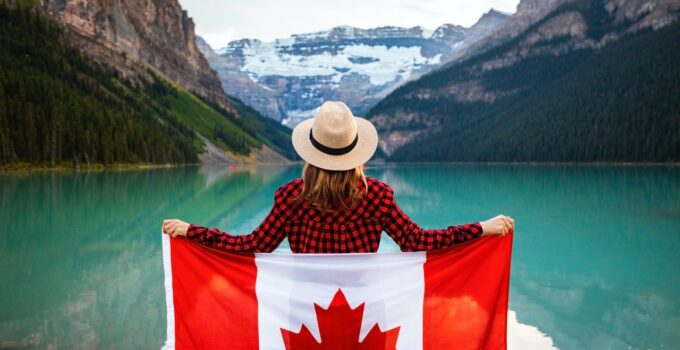Although Canada has a public face of being one of the friendliest countries on Earth, its history with the indigenous people of these lands is difficult to read and learn about.
If you understand the responsibility of learning more and want to do what you can to support and uplift indigenous voices, visiting some of these locations will put you on the right path.
1. French River Provincial Park, Ontario
Source: twitter.com
This river was once the watercourse that indigenous people used to take for trade and is still a large part of the modern lives of the indigenous people of the area. Although this is considered a heritage river, the visitor center works with local indigenous communities to host festivals, workshops, and art gatherings to reveal that these people aren’t just in the past.
If you don’t know much about the indigenous people of Canada and want to begin to learn, this is a fantastic place to start.
2. Squamish Lil’wat Cultural Centre, British Columbia
Source: slcc.ca
If you want to move somewhere that’s fully aware and open about its history; you’ll want to consider looking at real estate for sale in Whistler, and you can find more on this on redfin.ca. The Squamish Lil’wat Cultural Centre is located on Blackcomb Way. It offers a view into the people who have always lived on this land and the ingenuity and creativity they offer.
It can be a lot to take in if you’ve never been to the area, but this center offers everything from art, exhibits, film, food, crafts, tours, and even live performances. It’s an awesome way to get to know the indigenous people and connect with them.
3. Baffin Island, Nunavut
Source: destinationcanada.com
Baffin Island is the largest island in Canada and is well known for the thirteen communities of indigenous people who have lived here for over four thousand years. Annual marches are held to honor missing, murdered, and harmed indigenous women in Canada and discuss the very real horrors they still have to live through.
This can be a heavy visit for those who aren’t prepared for it, but it’s vital to come to terms with the reality, so many indigenous women have to face.
4. World’s Tallest Totem Pole, British Columbia
Source: murraychronicles.com
If you want to see something incredible, the World’s Largest Totem Pole is home in British Columbia. Although this is used mostly as a tourist trap location, the fantastic thing it does is bring awareness to the local indigenous people and the trials they’ve had to go through.
You can view the totem pole for free, but it’s advised that you stop in the many local museums to learn more about the people who built it and why it exists as it does.
5. Bon Echo Provincial Park & Mazinaw Rock, Ontario
Source: mapio.net
Just north of Kaladar in Ontario, this two-kilometer rock formation stretches along Mazinaw Lake. The most important thing about this site is the endless indigenous paintings along the base of it. These connect modern Canada to its long, troubled past and the people who have called this home long before the country was called Canada.
Visiting here, you can enjoy the views of beautiful water, especially as the seasons change, but it’s not a site to be taken lightly.
6. Head-Smashed-In Buffalo Jump, Alberta
Source: flickr.com
Another location that, without any doubt, you should visit when exploring Canada is Head-Smashed-In Buffalo Jump. Believe it or not, this is one of the oldest and biggest jump sites in Canada and the entire world. It is worth mentioning that this location became a UNESCO World Heritage Site 40 years ago. That only confirms how amazing Buffalo Jump is and it suggests you should certainly visit it.
The cliff you will find here is around 328 yards long. When we translate that into meters, the number we will get is 300. Despite that, the cliff itself is around 10 meters high (around 33 feet). It is probably going to be difficult to imagine how big Head-Smashed-In Buffalo Jump is. Experiencing something like that will be much better. So, what are you waiting for?
7. Broken Group Islands, BC
Source: ucluelet.ca
We will once again get back to British Columbia as there is another location you should visit. Believe it or not, Broken Group Islands is actually an archipelago that contains more than 100 islands. All of them have similar or almost identical characteristics. You will manage to see a bunch of sand beaches as well as rocky shores. However, if you are a big lover of animals, then a big group of wildlife you can see there will surprise you even more.
Have you ever heard about Teshaht Nation? Well, one of the islands, Beson Island (also known as C’isaa) is the birthplace of this nation. Believe it or not, Tseshaht Nation lived here 5000 years ago. Their culture is special, and that is something you should certainly check out in case you are interested in Canada’s Indigenous People.
8. Bighorn Backcountry, David Thompson Country, Alberta
Source: rdnewsnow.com
In case you visit Banff, we strongly recommend you move to the east a little. There, you can find the Bighorn Backcountry that will impress you in many ways. A big collection of 12 Public Land Use Zones are waiting for you there. You will manage to see beautiful mountains, a wide range of wildlife, as well as certain traces that First Nations left.
The First Nations had lived there for a few thousand years. It was a perfect location for them during the winter as allowed them to establish camps during cold days. Something worth mentioning is that you will manage to see a couple of prayer sites as well as sweat lodges. Believe it or not, they have remained recognizable until today.
However, there is one note that you should know as a tourist. A strict rule that everyone who comes here needs to respect – touching the artifacts is forbidden. There is a good reason why they remained there for so many years, and you would probably feel bad in case you do something wrong.
Bonus Tip: Arts Festivals Are Something Worth Visiting
Before we end this article, there is one additional tip all the tourists interested in Canadian indigenous nations should hear. During July, you should visit one of the most popular events in Canada – the Great Northern Arts Festival.
The festival is organized in the Northwest areas of the country. During the summer months, a bunch of artists from Northwest Territories, Nunavut, and other parts of Canada come to this place to represent the culture of the First Nations. You will manage to see a bunch of drummers, dancers, and musicians that will describe the culture of indigenous nations in the most creative way. We are pretty sure you will like it.




